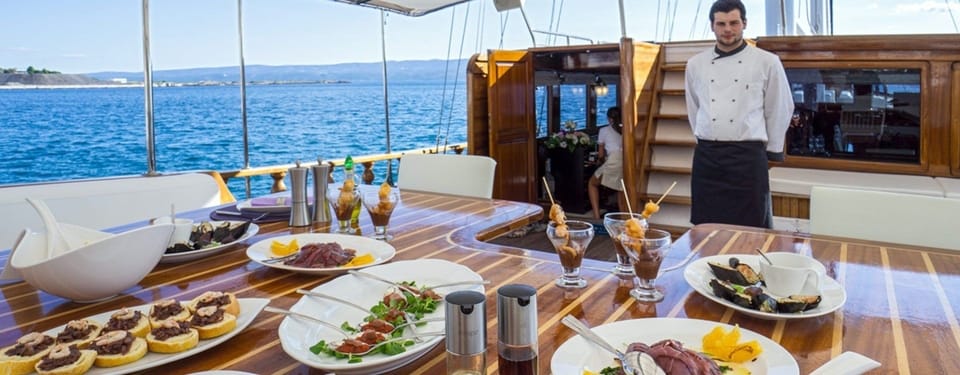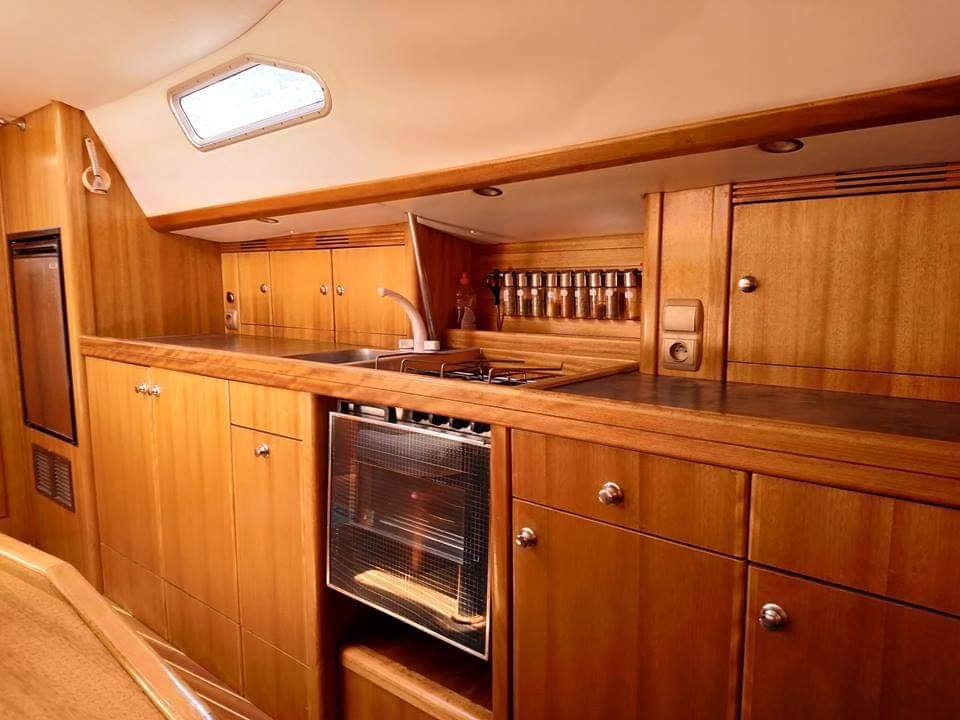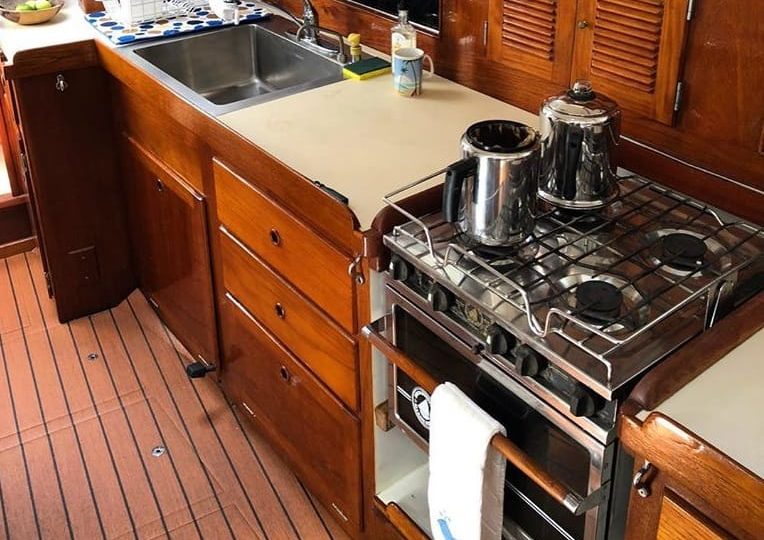How To Cook On a Sailboat
In all your adventures on the vast expanse that is water, have you ever tried cooking on a sailboat? Such a question is not an attempt to test your love for sail boating or anything similar that you do on the vessel. It aims to probe into the genuinely gratifying things you have done out there. So again, have you tried cooking on a sailboat, say, make a scrumptious delicacy out of your catch? Nothing hardly feels better.
Even though moving through scenic waters, anchoring on a new location, and unearthing hidden jewels on your way are an essential part of a sailing adventure, cooking on a sailboat adds a unique dimension to the entire experience.
You will most likely discover incredible spots to eat through your voyage. However, there will be many occasions where cafes and restaurants are remote. That it is the time that knowing what to cook and how to go about it becomes a huge thing.
In the case that you have not tried such cooking before, do not raise your expectations concerning the kitchen in the yacht. Cooking on the boat is different from cooking in the kitchen by thick margins. If you are cooking for company but you do not know how much food to cook, check the number of people on board. Also, consider the quantity of food they can consume daily and add a slight surplus. People asking for more food is not uncommon.
Creativity is King Especially On The Boat
The moment you set sail, you lose the luxury of jumping to the store to get what you need for the meal. It could be recipes, tools, pans, or provisions, but you have to deal with all you have available aboard. It can be a little overwhelming, sometimes, especially when you forgot to get something. But do not be scared. Times like that are when you can look inwards and be creative. And if you do that well, it could be your best-cooked meal on a sailboat.

Organize and Plan to Get All You Need:
- Curate a list
- Again, creativity and innovation, lack of ingredients, or the use of alternatives would not re-make the meal you intend to cook, but it will certainly work out to be a new one you might not have had before. In essence, do not be scared to experiment.
- Ranks in order- prioritize your needs. Drinking water, more booze, canned food over snacks or vice versa, you decide. Just plan adequately for what you will drink and eat.
Account For Limited Space
Space is the biggest difference between cooking in your kitchen and on a sailboat. Space is very limited but cooking on a boat makes you manage space properly while cooking. You are expected to know where to place each kitchenware or else the set up will look disorganized. It is more complicated than cooking in your house.
Tips For Cooking On a Boat:
- Get the demanding tasks done before getting onboard: Chop the salad, onion, carrots, and any other thing from home.
- Take along dynamic objects: a Swiss army knife, for example, is the go-to preference as it has a can opener, a knife, bottle opener, et al. This goes for food too. Purchase groceries that can be used for various meals, like pasta, rice, potatoes, et al.
- Maximize space: do not waste space on things you will hardly need. Boneless meat that is refrigerated will be a good option here. And do not dispose of cans and similar objects in the garbage because they can be used again for the little garbage cans.
- Enough drinks: people on board will come to appreciate your discretion when you get enough drinks aboard. Ensure you her not less than 2 liters per person daily. Purchase enough or a little more of alcohol and soda drinks. Tea and coffee should be available as well.
- Groceries: Items are not simple to estimate. This is true, especially because people on the sea often get hungry and eat more than they are on the land.
Do not forget that groceries like meat, milk, vegetables, and bread need to be restocked from time to time.

Equipment
Space is limited, so equipment and utensils come limited too. Here are few tips to bring the important ones aboard:
- Get cutting boards that either fold down or clamp onto something.
- Get a spatula, can opener, wooden spoons, bottle opener, and wine opener.
- Make use of lightweight metal or plastic for all dishes.
- Ensure that there is safety railing over the stove’s edge and be sure you put away every ingredient or item as you cook.
- If the boat does not have safety latches on cupboards, get some before coming on board.
Meals
To mention a meal at this stage might seem redundant, but it is because of its importance. Plan the meals well in advance with this information:
- Make a dinner list for every night you will be on board with the prepared recipe.
- For both breakfast and lunch, plan to have simple meals (Granola bars, toast, eggs).
- Calculate the gas required before setting sail. This is because space is not much.
Fast Recipe Suggestions For Boat Cooking
Risotto with Shrimps and Apples
Before setting out, get fresh shrimps. With 2 tablespoons of olive oil in a frying pan, cut two little cubes of apples and brown them. After they are softened, place them in a dish. Then make a liter of broth in a pot. In the pan where you have browned the apples, brown a half white onion along with about 3 tablespoons of oil. Add a glass of water to it too.
As for the uncooked rice, add 2 pinches per head with 2 punches for the pot. Douse the rice in wine and cook it slowly as you add the broth and dose with a ladle. Shortly after the cooking (preferably a few minutes), add the peeled shrimps and apples. Then you can add about a hundred grams and cook it until it becomes creamy. Add fresh parsley after this. And there you have it- a sizzling risotto with shrimps and apples.
Couscous with Vegetables and Chicken
The only challenging stage of this course is getting someone on the vessel to cut the vegetables. This can be skipped as earlier stated. Doing such a task before embarking will save you much stress and time. To make the seasoning, cut 3 peppers and 5 courgettes into small cubes. Then heat 6 tablespoons of olive oil where you will heat the pepper and courgettes.
Then make a saucepan of four glasses with a few broths made with a vegetable stock cube. Place it in the pan to cook, and halfway through this, put one can of drained chickpeas, chili powder, curry, and salt and attempt to dose all these by your taste.
After these, put the vegetables in a bowl. In the pan where the vegetables were cooked, fry a white onion there and cook a chicken breast. Place the couscous in a bowl before adding one teaspoon of turmeric for every glass in it. Then boil the saltwater in a saucepan and pour it on it before covering with a cloth or wrap for about 5 minutes. Then you can serve in every dish a portion of delightful couscous covered with chicken and vegetables.
Trofie with Tomatoes, Pesto, and Chickpeas
How about a fast and tasty Italian treat on the sailboat? You should know that cooking a pasta dish aboard can be somewhat different from the regular fast recipes. Fry five tablespoons of olive oil in a pan, with some cloves of garlic. Then add cherry tomatoes (a pack and half) cut and washed into desired pieces.
Remove the garlic after the tomatoes are soft and add a pack of 200 grams of chickpeas. You can opt for the dried ones to soak them for about 4 hours a day before. But using those readily-cooked ones in a glass jar is simple and fast. Then make a kilogram of Trofie before adding the cooked sauce.
How To Cook On a Sailboat – Summary
I hope that after reading this piece, you would have gotten everything you need to cook safely when next you are in a boat. Cooking on a boat is not technical, and all you will mostly need is a little bit of luck and someone to help with the slicing and peeling. It is a task that will require you to dig deep and navigate your culinary proficiencies: especially when major ingredients are missing. You just have to be creative, and when you deliver, don’t be too shy to accept accolades and rounds of applause complimenting your skills in the kitchen.
